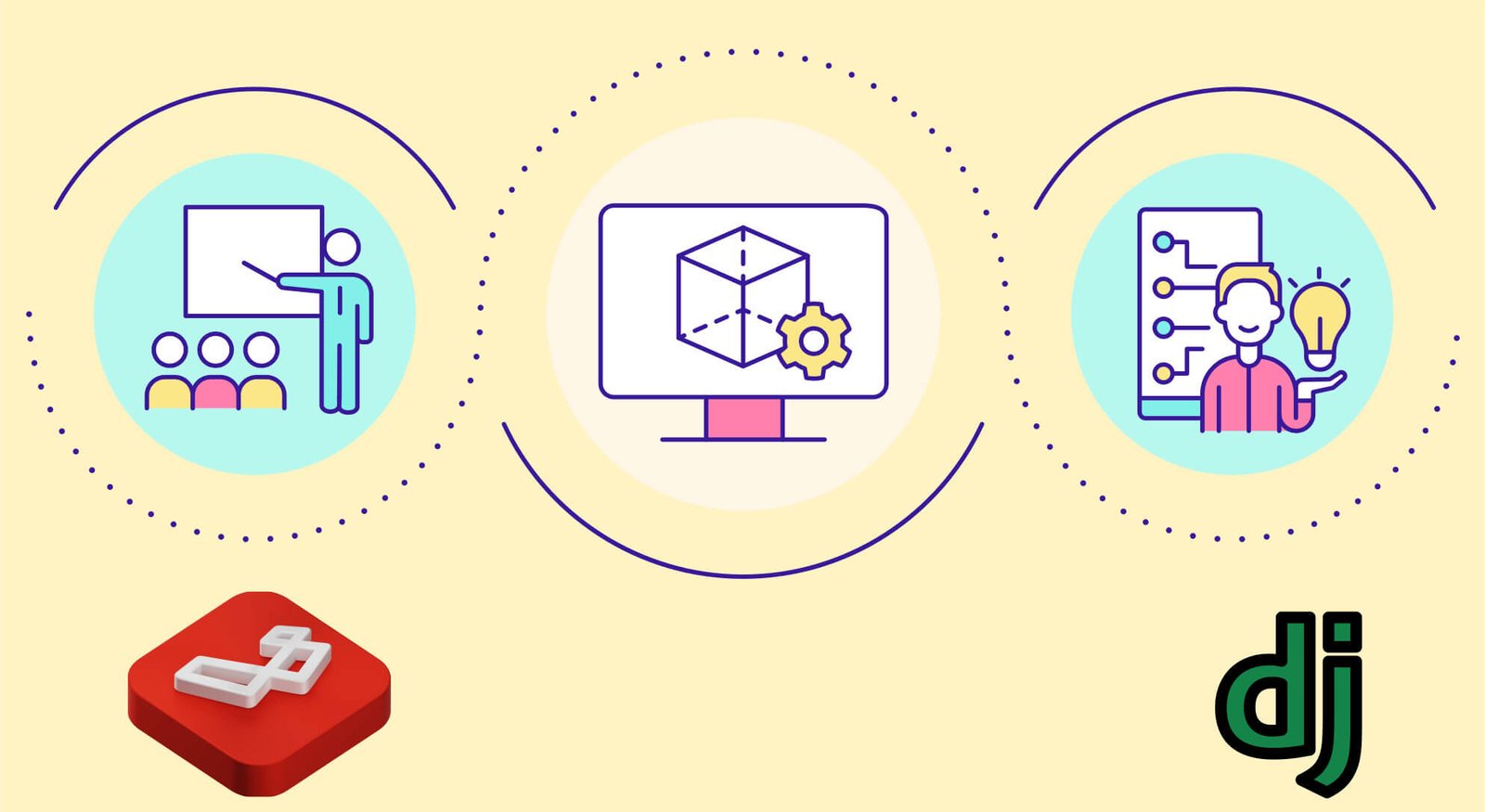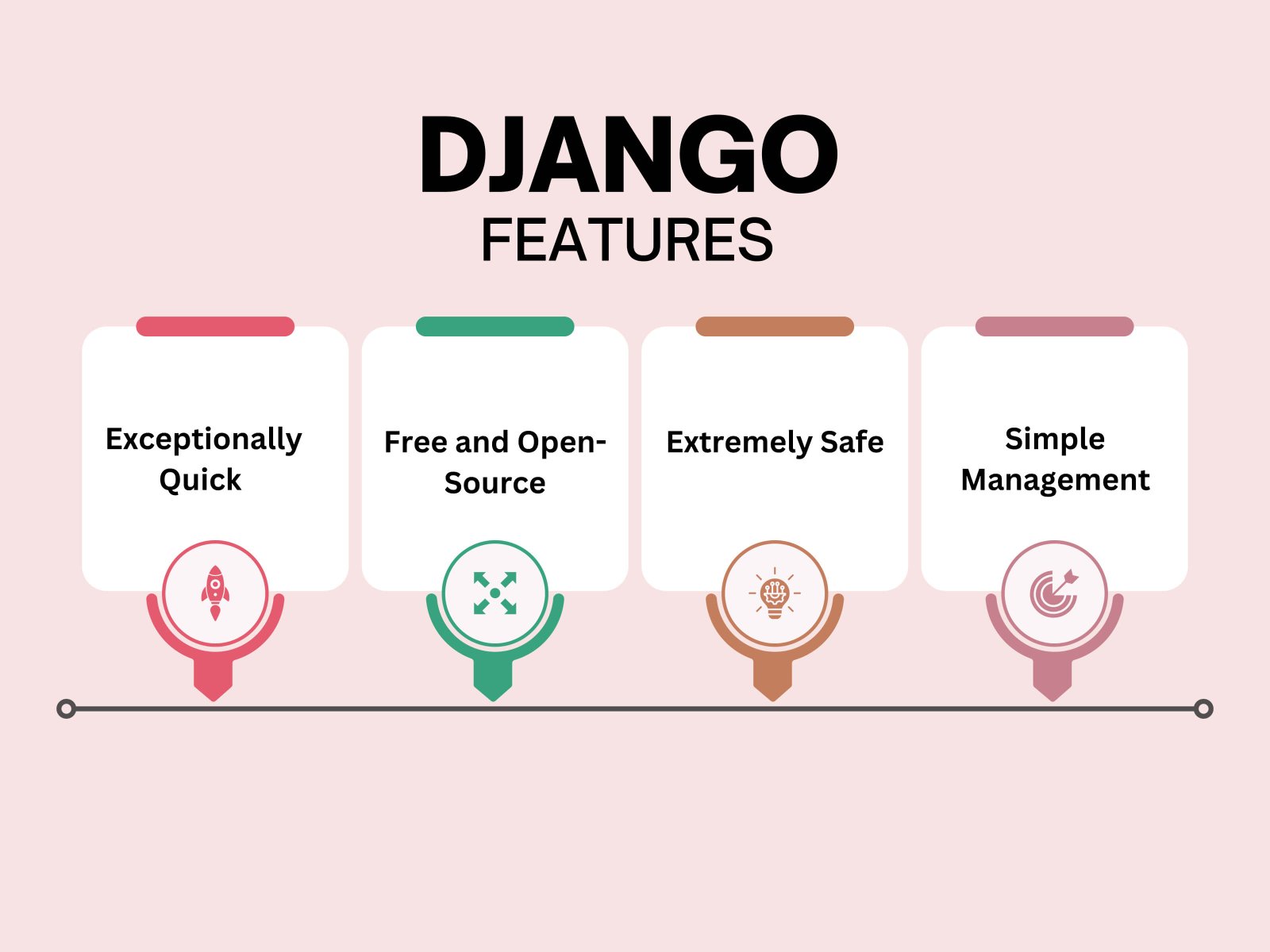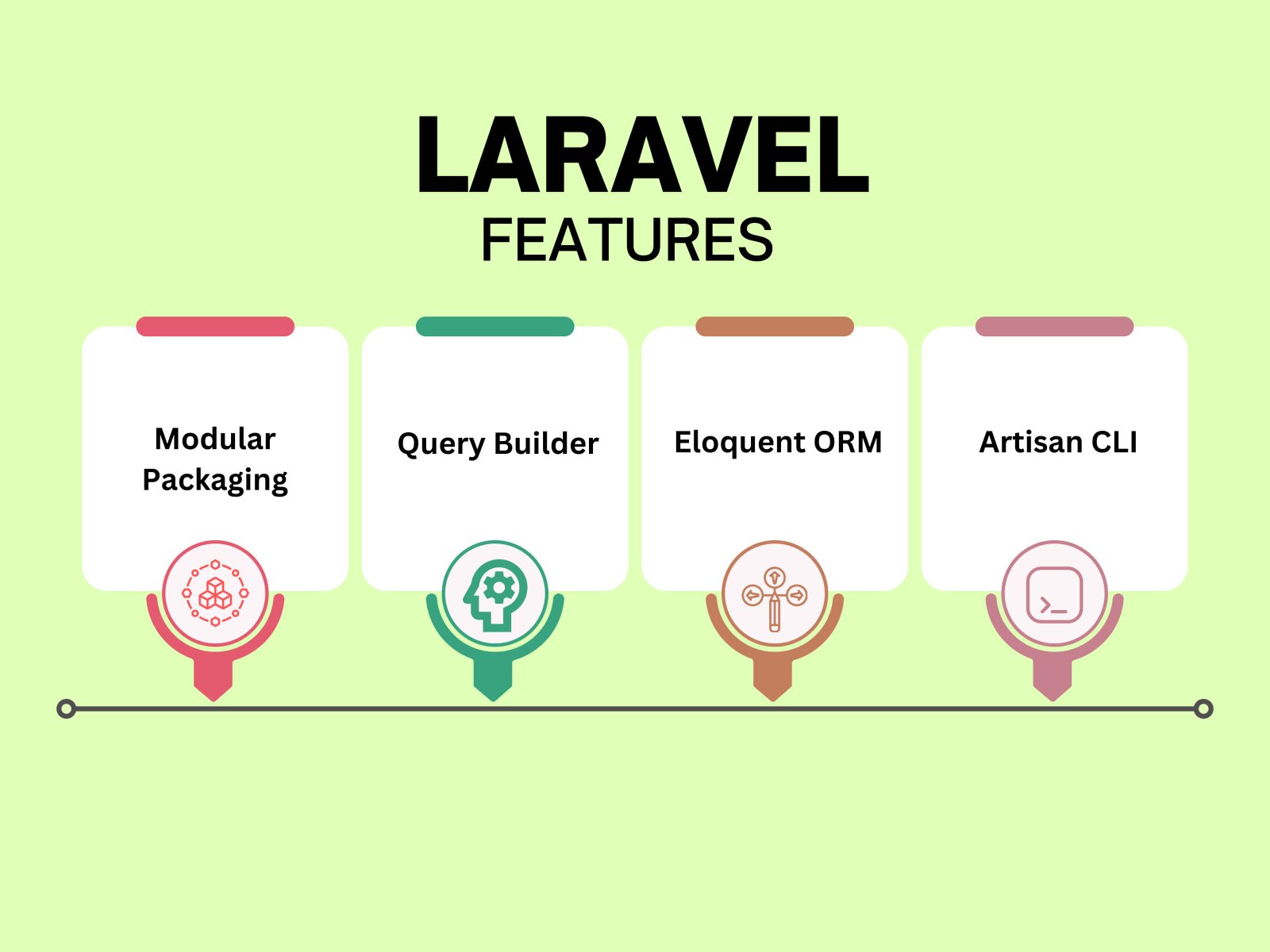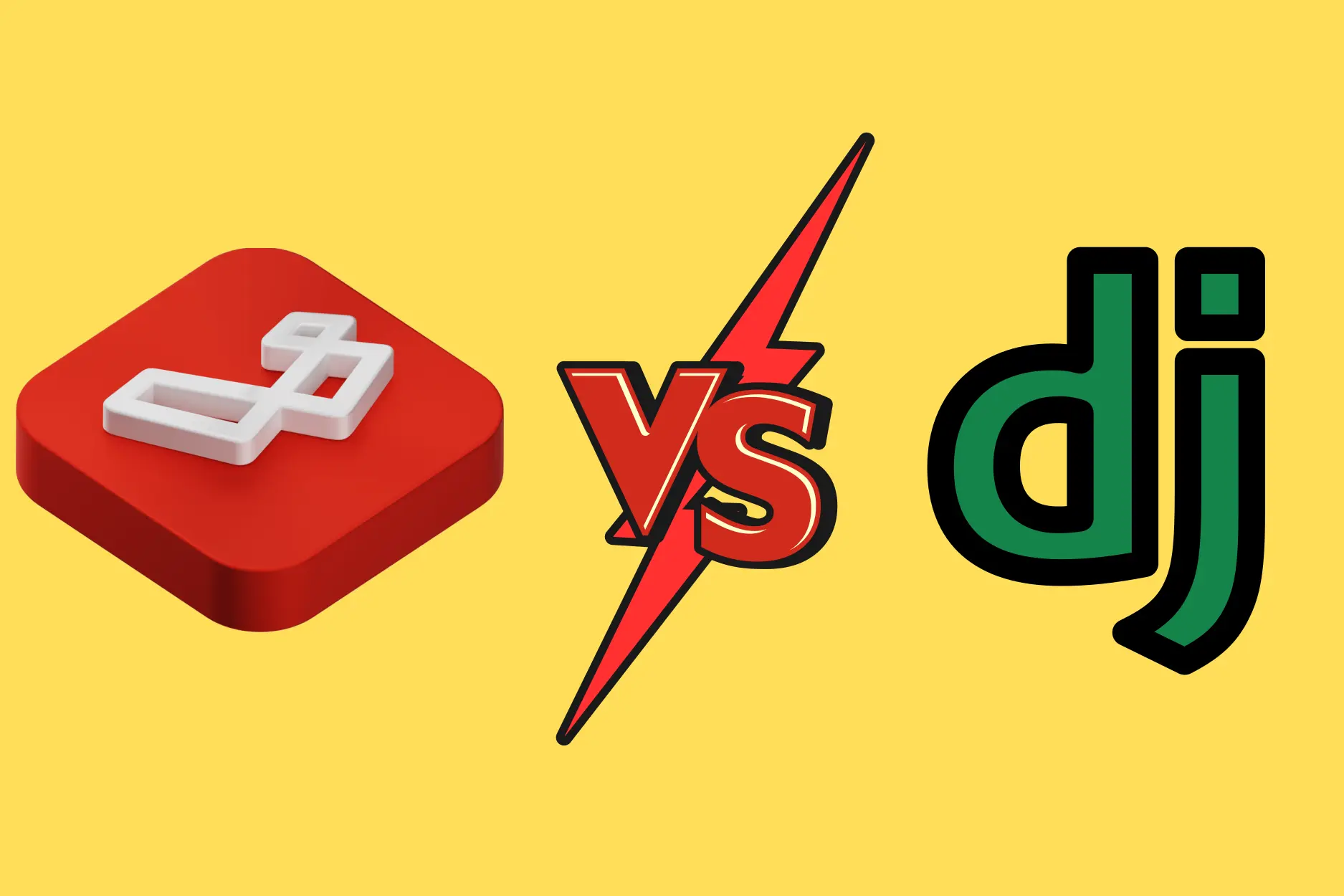Introduction
Choosing a web framework like Django vs Laravel 2024 is critical in web development. These frameworks are the foundation for your web application, and the right choice can make or break your project. There's no one-size-fits-all answer; the best framework depends on your specific project and target users. However, understanding the key differences between Django and Laravel can help you make an informed decision.
Both Django and Laravel are prevalent web development frameworks with solid communities. According to a Statista poll, React topped the index of the most favored frameworks among developers in 2021. Django came in second with 15%, and Laravel third with 10.1%. The core difference between them lies in their approach: Django is a Python-based framework emphasizing reusability and following the MVT (Model-View-Template) architecture.
Laravel, on the other hand, is a PHP-based framework known for its elegant syntax and development speed and adheres to the MVC (Model-View-Controller) pattern. Let's explore these frameworks more thoroughly before learning about their core features and use cases.
What is Django?
Django is a free and open-source PHP web framework . The Django Software Foundation is responsible for its development and upkeep. It was released in 2005. The most recent version of Django, version 3.2, is licensed under a 3-clause BSD license. It reduces the code you need to write and speeds web development by offering a neat, pre-written framework. This emphasis on efficiency stems from its utilization of the Model-View-Template (MVT) architecture, which divides and organizes the many components of your online application.
Furthermore, Django can grow to accommodate intricate applications and has a robust feature set for security. This means that various initiatives, from straightforward web pages to complex scientific computer systems, can benefit from it.
Django is used by companies of all sizes, from start-ups to established enterprises, to develop their online applications. The world's biggest tech companies have noticed it because of its adaptability, simplicity, and speed. Even the world's most used app, Instagram, used Django in its early development stages. It helped them scale their application to handle a large user base and data.
What is Laravel?
Laravel is a PHP web application framework available for free and open-source use. Taylor Otwell created it in 2011 to create online apps. The most recent version of Laravel, Laravel 8, was published in September 2020, and Laravel 9 is scheduled for release in January 2022. Laravel is licensed under the MIT license.
Laravel simplifies development by offering pre-built tools for routine operations like routing, user authentication, and database interfaces, freeing developers to concentrate on crafting their applications' distinct functionalities and logic. Its success is due to its robust features that simplify web development, appealing syntax, and ease of usage.
Businesses in various industry sectors, including IT, SaaS, healthcare, finance, entertainment, travel, and retail, utilize Laravel development services.
Notable Laravel users include the Toyota Hall of Fame, the BBC, Lenovo, Wikipedia, FedEx, 9GAG, Laracasts, Asgard CMS, and many more well-known institutions.
Django vs Laravel - Performance

Performance is king in the world of web applications. Users expect lightning-fast responsiveness, and sluggish applications lead to frustration and abandonment. While hardware plays a role, the choice of programming language and web framework significantly impacts performance.
Django's Performance
Django, which is driven by Python, has remarkable raw speed. Python's quick compilation and execution speed helps with fast development and effective code debugging. As a result, using the programs is more seamless and takes only a few seconds (2–3 seconds). Django does, however, have specific performance limitations.
Slowdowns can be caused by serializing and deserializing JSON data, using middleware to process requests, and converting database queries into Python web framework. These obstacles can be removed by utilizing high-performance hardware, prioritizing use cases, and following recommended methods.
Laravel's Performance
Laravel offers a robust framework with a wealth of built-in features. This abundance can sometimes lead to performance drawbacks compared to leaner frameworks. Developers must look at ways to speed up development to compensate for this. The good news is that Laravel's performance has significantly improved since PHP 7's release, giving it a more competitive option.
Django vs Laravel performance considerations can influence your choice. If raw speed is your top priority, Django, with its Pythonic foundation, might be the better fit. However, Laravel's extensive features and recent performance improvements also make it a compelling option. Ultimately, the best framework depends on your project requirements and team expertise.
Django vs Laravel - Architectural Showdown

Choosing the best web framework for 2024 involves a critical decision: the architectural pattern. This pattern determines your project's flexibility while sticking to pre-established frameworks. Let's see how Django vs Laravel handles web application development.
Django's MVT Architecture
Django employs MVT (Model-View-Template), a unique twist on the popular MVC pattern. Here, the template file, a combination of HTML and Django's templating language, takes over the controller's role in generating dynamic websites. Just as Instagram customizes content for each user, jobs like customizing user feeds are easier to complete.
Laravel's MVC Architecture
Laravel follows the classic MVC (Model-View-Controller) approach, which grants you fine-grained control over your application. You may improve your application's general appearance and feel and specify particular paths to improve its SEO. Laravel's MVC architecture makes connecting to other APIs and reusing code simple, making it an excellent option for developing reliable backend systems for any web application.
Django vs Laravel - Scalability
When building your web application, scalability is MUST! Your app must change as your business grows and user needs change (imagine a rapidly growing user base and constantly changing market trends). The programming language and framework you select will greatly influence how efficiently your application grows or how well it can manage high traffic and incorporate new features. This is where the Django vs. Laravel debate comes into play.
Django's Scalability
In terms of scalability, Django outperforms. It uses Python's built-in scalability, a language renowned for its adaptability and capability to tackle challenging jobs. Django easily interfaces with a wide range of technologies to maximize efficiency and guarantee blazingly quick loading times. Django has you covered, too, whether it's for load balancing or simplifying optimizations for databases, pictures, and CSS. Better still, what could be? Django easily interacts with cloud platforms and Content Delivery Networks (CDNs), ensuring your application will scale over time as it expands.
Laravel's Scalability
Laravel isn't one to be left behind in the scalability race. Built on PHP, a language well-suited for growing businesses, Laravel offers good scalability options. However, Python's flexibility in adapting to new trends and demands might give Django a slight edge. Laravel for web development can achieve excellent horizontal scaling with a dependable load balancer and database. Cloud services like AWS, MySQL, and caching mechanisms can further enhance scalability for Laravel applications. Still, due to Python's inherent strengths, Django's scalability is often considered more impressive.
Django vs Laravel - Testing and Debugging
Both Django and Laravel prioritize building secure and functional web applications. Regular testing and debugging are crucial to this.
Effortless Testing in Django
Every application can suffer from performance glitches, security holes, and user experience snags. These issues can be squashed through frequent testing and debugging. The good news is that testing and debugging Django with Python is a breeze. Excellent online debuggers, such as the Python Debugger, make code testing easier. The ease of testing a Django-based application stems from the abundance of tools available to simplify the procedure. You may use the Django documentation to test your code at different levels and create a reliable and error-free application, optimizing efficiency and clarity.
Laravel Testing Made Easy
Laravel offers a two-pronged approach to testing: unit tests and feature tests. It also has extensive testing documentation that will walk you through testing your code at various stages, including mock testing. PHP debugging can be challenging at times, but it can be made easier with the help of a PHP debugger such as XDebug . Django vs Laravel are significant competitors in the testing and debugging space, as Laravel provides extensive testing tools that ensure your application is error-free.
Django vs Laravel - Security Standoff
Protecting your application and user data is paramount. A secure web framework is your key defense in this battle. Let's compare the security features offered by Django and Laravel.
Django's Security
Python's well-regarded security extends to Django. This framework provides robust defenses against various threats. Its user authentication mechanism is safe and handles passwords and accounts with care. Django also has defenses against widespread security flaws like clickjacking, CSRF (Cross-Site Request Forgery), XSS (Cross-Site Scripting), and others.
Laravel's Security
While Laravel, built on PHP, might be perceived as having a slightly higher inherent risk, it also offers security features. Laravel employs salted and hashed passwords, preventing plain text password storage in the database. It utilizes the Bcrypt hashing algorithm for a secure password representation. Like Django, Laravel protects users from cyberattacks like XSS, SQL injection, data interception, and malicious cookies. The PHP community actively addresses security concerns, but in this Django vs Laravel matchup, Django emerges as the more secure option.
Django Features 2024

- Free and open-source: Django may be used in whatever way you choose to develop your application; all you have to do is download and install it. It improves convenience while lowering development costs. You can even help with code and bug fixes.
- Exceptionally quick: With the help of this framework, developers may finish their projects more quickly from the beginning to the end. It is intended for fast web development, enabling you to create many apps rapidly.
- Extremely safe: The secure framework Django may thwart SQL injection, clickjacking, cross-site scripting, request forgery, and other dangerous threats. It has a secure user authentication mechanism that offers account and password management protection.
- Scalable: Modern systems need to be highly scalable to handle high traffic demands. Even during peak hours, Django can quickly manage high traffic volumes and scale to accommodate growing user bases.
- Simplicity: Django's goal is to make it easier to construct intricate, database-driven websites and apps. You won't have any issue understanding and utilizing it in your web apps because of its learner-friendly, practically flat learning curve and straightforward syntax in its easy-to-read code, especially for novice developers.
- Completely functional: Django has many additional features to manage web development tasks. It can handle duties like site mapping, RSS feeds, content administration, and user authentication out of the box.
- Simple management: Django's incredibly flexible design makes it simple to handle development responsibilities at any stage, from ideation to successful deployment. An optional administrative interface for adding, editing, reading, and deleting objects is also provided. Python is used for files, settings, and data models throughout.
Laravel Features 2024

- Elegant and expressive syntax: Its developer-friendly syntax is elegant and expressive. You don't have to bother about little repetitive tasks when you may create a wide range of software goods.
- Modular packaging: Bundles are readily available for application use and have been a feature since the introduction of Laravel 3. Additionally, Composer, dependency management for PHP packages unique to Laravel but not dependent on any framework, is used by Laravel 4. It may be obtained via Packagist.
- Query builder: This offers programmatic query creation, direct database access, and several classes and methods. You do not need to create SQL queries explicitly for it. You can also cache query results that have been processed selectively.
- Application logic:Controllers or route declarations implement this. Application logic has the same syntax as the Sinatra framework.
- Templating engine: This engine transforms templates into cached code for improved efficiency, combining numerous templates using a data model for view creation. In addition to being a fantastic tool for building dynamic websites, it provides control structures like loops and an internal conditional statement mapper.
- Eloquent ORM: Eloquent ORM, or object-relational mapping, is an advanced version of the active record pattern built on PHP. It enables you to impose restrictions on the relationships between database objects. Additionally, it allows developers to write PHP syntax database queries rather than SQL code.
- Artisan CLI: First available in Laravel 3, Artisan is the framework's command-line interface (CLI). It combines several Symfony components and facilitates more efficient management and development of Laravel-based applications. In addition, it handles boilerplate code creation, publishing package assets, database migrations, seeding, and other tasks.
Django vs Laravel - Pros and Cons
Choosing between Laravel and Django could be challenging because each has advantages and disadvantages. Let's examine each.
Django Pros and Cons
Pros |
Cons |
| Quick Development: Django is engineered to facilitate quick development, allowing applications to get from concept to market more quickly. Building complicated apps requires less code because of the abundance of built-in capabilities. | Monolithic Framework: This monolithic framework has few dependencies. The framework's progress is slowed because all built modules must be backward compatible. |
| High Scalability: It can easily manage significant traffic levels, providing quick loading times and interfacing with various technologies. It also balances resource usage and optimizes components like pictures, CSS, and HTML to achieve maximum performance. | Several Request Issues: It is difficult for developers to work efficiently on the codebase since it can only handle several requests, unlike other popular frameworks. |
| Robust Security Features: Django's robust security features, which guard against common online threats like SQL injection, cross-site scripting, and cross-site request forgery, make it easier to create safe web applications. | Migration Complexity: While Django’s migration system is powerful, handling complex database schema changes can be challenging. Automatic migrations might not always handle all edge cases, and manual intervention can be required, which adds to the complexity and potential for errors during the development process. |
Laravel Pros and Cons
Pros |
Cons |
| Faster Time-To-Market: Using pre-built structures and functions based on the most recent PHP concepts, Laravel runs on a modular foundation to help developers rapidly and effectively create responsive web apps. | Lightweight Framework: Although this framework's lightweight characteristic is often seen as advantageous, it also results in an enormous backlog in processing database queries, lowering performance and increasing data congestion. |
| Built-in Authentication and Authorization System: It is a quick, safe, and adaptable way to incorporate user permission and authentication into online applications. Laravel's system is an excellent option for developers because of its pre-built functions and methods, password hashing and encryption, and scalability. | Performance Overhead: Laravel is known for its rich feature set and ease of use, but this comes at the cost of performance. The framework can introduce significant overhead due to its many built-in features and abstractions, making it less suitable for applications that require high performance and low latency. |
| Eloquent ORM: It makes database-related code easier to write and maintain by allowing developers to express it using an object-oriented syntax. Eloquent ORM also has a sophisticated PHP-based active record pattern, which enables developers to use PHP rather than SQL for database queries and to impose constraints on the relationships between database objects. | Frequent Updates and Changes: Laravel is actively maintained and frequently updated, which is great for staying up-to-date with the latest technologies and security practices. However, this can also be a downside as it may lead to breaking changes, requiring developers to frequently update their codebase to stay compatible with the latest version. This can increase the maintenance burden and potentially introduce new bugs or issues. |
Django vs Laravel: Which Framework Is Adequate for Web Development?
Django appears to have won by a good margin of points. That does not imply that Django is superior to Laravel, though! If that were the case, Laravel would be used by considerably fewer developers. It's interesting to note that, despite Django winning this comparison, Laravel is the most widely used PHP web framework. Its popularity exceeds that of Django.
Django vs Laravel provides distinct advantages and disadvantages depending on the business size and industry sector. Most websites that are large-scale, security-conscious, performance-oriented, and dedicated to science favor Django. On the other hand, small-scale companies, SMBs, or novice developers may go for Laravel. However, applications of various sizes are supported by both frameworks.
When deciding between Django and Laravel for your project, consider the following factors: industry, business size, budget, skill level of developers, and project needs.
Frequently Asked Questions

Read more blogs

Time and Cost of Developing an AI like ChatGPT: Key Factors Explored
Explore the factors influencing the time and cost of developing an AI model like ChatGPT. Understand key considerations for successful AI ap

Guide to Successful Real Estate App Development: Features, Technologies, and More
Explore the advantages of developing a real estate app, key features, technologies to employ, and the importance of collaborating with a Rea

Custom vs. Template-Based Website Development: A Comprehensive Cost Comparison Guide
Explore the costs, pros, and cons of custom website development vs. template-based solutions. Make an informed decision for your online pres
